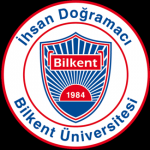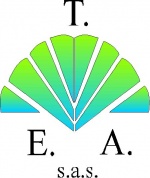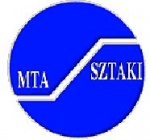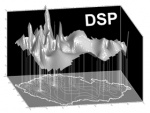Background: Difference between revisions
No edit summary |
No edit summary |
||
| Line 18: | Line 18: | ||
The AYIN project-team ([https://team.inria.fr/ayin/ Ayin]) is located at INRIA Sophia-Antipolis Méditerranée and aims to provide image processing tools to aid in the solution of problems arising in a wide range of concrete applications in Earth observation and cartography, for example cartographic updating, land management, and agriculture, while at the same time advancing the state of the art in the image processing methods used to construct those tools. An important recent theme, for example, is the incorporation of geometric information into stochastic and variational techniques, in the probabilistic case via the use of stochastic geometry, and in the variational case via the use of higher-order active contours. |
The AYIN project-team ([https://team.inria.fr/ayin/ Ayin]) is located at INRIA Sophia-Antipolis Méditerranée and aims to provide image processing tools to aid in the solution of problems arising in a wide range of concrete applications in Earth observation and cartography, for example cartographic updating, land management, and agriculture, while at the same time advancing the state of the art in the image processing methods used to construct those tools. An important recent theme, for example, is the incorporation of geometric information into stochastic and variational techniques, in the probabilistic case via the use of stochastic geometry, and in the variational case via the use of higher-order active contours. |
||
|} |
|} |
||
| Line 27: | Line 26: | ||
[http://www.eng.tau.ac.il/~nk/TAU-VISUAL.html TAU-VISUAL] at Tel Aviv University specializes in the extraction and processing of visual information from video and still images. The group has substantial expertise in the use of variational methods to solve fundamentally difficult problems, such as restoration, registration and segmentation of images and video. Typical application domains include medical image analysis, image retrieval, video analytics, environmental monitoring and 3D image acquisition. |
[http://www.eng.tau.ac.il/~nk/TAU-VISUAL.html TAU-VISUAL] at Tel Aviv University specializes in the extraction and processing of visual information from video and still images. The group has substantial expertise in the use of variational methods to solve fundamentally difficult problems, such as restoration, registration and segmentation of images and video. Typical application domains include medical image analysis, image retrieval, video analytics, environmental monitoring and 3D image acquisition. |
||
|} |
|} |
||
| Line 36: | Line 34: | ||
Bilkent EE Signal Processing group is interested in multimedia signal processing topics including Image, Video, Speech, 3D signal processing issues. Specific research topics of the group includes; Human-Computer Interaction using vision and speech, Audio-Visual Multimedia Databases, Speech Processing, Digital Coding of Waveforms ( Image, Video, Speech, and Biomedical Signals), Adaptive Filtering and Adaptive Subband Coding, Wavelet Transform and Applications, Time Series Analysis and Stochastic Processes, Signal Processing for Food Safety and Color Image Dithering. The groups is currently involved in 2 EU projects: FIRESENSE and MIRACLE. |
Bilkent EE Signal Processing group is interested in multimedia signal processing topics including Image, Video, Speech, 3D signal processing issues. Specific research topics of the group includes; Human-Computer Interaction using vision and speech, Audio-Visual Multimedia Databases, Speech Processing, Digital Coding of Waveforms ( Image, Video, Speech, and Biomedical Signals), Adaptive Filtering and Adaptive Subband Coding, Wavelet Transform and Applications, Time Series Analysis and Stochastic Processes, Signal Processing for Food Safety and Color Image Dithering. The groups is currently involved in 2 EU projects: FIRESENSE and MIRACLE. |
||
|} |
|} |
||
| Line 43: | Line 42: | ||
The Computer Vision and Multimedia Laboratory ([http://cvml.unige.ch CVML ]) of the University of Geneva is divided into three groups and carries out research in multimedia data processing, multimedia data management and security, as well as in multimodal human-machine interaction. Content-based Visual Indexing and Retrievalgroup: evelops strategies for the efficient indexing retrieval and exploration of large multimedia databases. Stochastic Information Processing group: studies various aspects of information theory and statistical (stochastic) information analysis and processing. Multimodal Interaction group: studiesvarious forms of interaction between humans, computers, and environment. Some considered interaction modalities are haptic, auditory, and based on physiological signals. Current developments concern: affective state determination and emotion recognition and their use for affective computing, multimodal interaction, brain-computer interfaces, mobility aids for sight handicapped people,object identification and authentication based on unclonable object features in large nonstructured databases, indexing and retrieval in very large multimedia databases, privacy preserving search, indexing and multiclass classification. |
The Computer Vision and Multimedia Laboratory ([http://cvml.unige.ch CVML ]) of the University of Geneva is divided into three groups and carries out research in multimedia data processing, multimedia data management and security, as well as in multimodal human-machine interaction. Content-based Visual Indexing and Retrievalgroup: evelops strategies for the efficient indexing retrieval and exploration of large multimedia databases. Stochastic Information Processing group: studies various aspects of information theory and statistical (stochastic) information analysis and processing. Multimodal Interaction group: studiesvarious forms of interaction between humans, computers, and environment. Some considered interaction modalities are haptic, auditory, and based on physiological signals. Current developments concern: affective state determination and emotion recognition and their use for affective computing, multimodal interaction, brain-computer interfaces, mobility aids for sight handicapped people,object identification and authentication based on unclonable object features in large nonstructured databases, indexing and retrieval in very large multimedia databases, privacy preserving search, indexing and multiclass classification. |
||
|} |
|} |
||
| Line 48: | Line 49: | ||
|[[Image:TCD.png|150 px]]|| |
|[[Image:TCD.png|150 px]]|| |
||
The School of Computer Science and Statistics in Trinity College Dublin has two collaborating groups, [http://gv2.cs.tcd.ie/ GV2] and [http://www.scss.tcd.ie/disciplines/statistics/statica/ Statica], that carries out activities on multimedia data (e.g. images, video and sound), sensor network data (e.g. road trafic, communications networks, camera network, motion capture) and environmental data (e.g. weather). STATICA focuses on Bayesian inference to solve statistical problems that arise in computer science, information systems and telecommunications focusing on developing statistical techniques to analyse large and complex data. GV2, the Graphics Vision and Visualisation group, has expertises in computer graphics, computer vision and all aspects of visual computing. GV2 was formed in 2006 with the integration of two longstanding TCD research groups: the Image Synthesis Group [ISG], established in 1993, and the Computer Vision and Robotics Group [CVRG], which was established 1983. |
The School of Computer Science and Statistics in Trinity College Dublin has two collaborating groups, [http://gv2.cs.tcd.ie/ GV2] and [http://www.scss.tcd.ie/disciplines/statistics/statica/ Statica], that carries out activities on multimedia data (e.g. images, video and sound), sensor network data (e.g. road trafic, communications networks, camera network, motion capture) and environmental data (e.g. weather). STATICA focuses on Bayesian inference to solve statistical problems that arise in computer science, information systems and telecommunications focusing on developing statistical techniques to analyse large and complex data. GV2, the Graphics Vision and Visualisation group, has expertises in computer graphics, computer vision and all aspects of visual computing. GV2 was formed in 2006 with the integration of two longstanding TCD research groups: the Image Synthesis Group [ISG], established in 1993, and the Computer Vision and Robotics Group [CVRG], which was established 1983. |
||
|} |
|} |
||
| Line 56: | Line 58: | ||
The CWI Stochastic Geometry subgroup (ST2.3) is concerned with random geometric structures, ranging from simple points or line segments to arbitrary closed sets. Although it has roots in geometric probability and integral geometry, the modern theory of random sets was developed in the seventies, independently by David Kendall in Cambridge and Georges Matheron in Fontainebleau with important contributions from the German school around Professors Mecke and Stoyan. Stochastic geometry techniques can be applied in a wide range of fields for instance image analysis, telecommunication networks, forestry, and environmental research. |
The CWI Stochastic Geometry subgroup (ST2.3) is concerned with random geometric structures, ranging from simple points or line segments to arbitrary closed sets. Although it has roots in geometric probability and integral geometry, the modern theory of random sets was developed in the seventies, independently by David Kendall in Cambridge and Georges Matheron in Fontainebleau with important contributions from the German school around Professors Mecke and Stoyan. Stochastic geometry techniques can be applied in a wide range of fields for instance image analysis, telecommunication networks, forestry, and environmental research. |
||
|} |
|} |
||
<!-- |
<!-- |
||
{| |
{| |
||
| Line 63: | Line 64: | ||
|} |
|} |
||
--> |
--> |
||
{| |
{| |
||
| Line 76: | Line 80: | ||
The Linkmedia team of Inria is located in Rennes France, Its seminal idea is that of content-based media linking with the ultimate goal of enabling better multimedia applications and new innovative services. Taking a content-based perspective, the team seek to create explicit links at different levels to better reflect the context: links at the signal level, e.g., with repeating patterns; links at a semantic level, e.g., to follow topics or stories; links at a paradigmatic level, e.g., to have further details or comments on a topic. |
The Linkmedia team of Inria is located in Rennes France, Its seminal idea is that of content-based media linking with the ultimate goal of enabling better multimedia applications and new innovative services. Taking a content-based perspective, the team seek to create explicit links at different levels to better reflect the context: links at the signal level, e.g., with repeating patterns; links at a semantic level, e.g., to follow topics or stories; links at a paradigmatic level, e.g., to have further details or comments on a topic. |
||
|} |
|} |
||
<!--{| |
<!--{| |
||
|[[Image:Logo-armines.jpg |150 px]] || |
|[[Image:Logo-armines.jpg |150 px]] || |
||
| Line 85: | Line 85: | ||
contact : Beatriz.Marcotegui@mines-paristech.fr |
contact : Beatriz.Marcotegui@mines-paristech.fr |
||
|} |
|} |
||
--> |
--> |
||
| Line 93: | Line 94: | ||
|[[Image:logoVIP.gif |150 px]] || |
|[[Image:logoVIP.gif |150 px]] || |
||
The research group [http://decsai.ugr.es/vip/ "Visual Information Processing"] consists of members of the [http://www.ugr.es/ University of Granada] and the [http://www.ujaen.es/ University of Jaén], from complementing fields as mathematics, statistics, computer science and physics, we carry out research on image restoration and enhancement, superresolution from compressed and uncompressed stills and video sequences, information retrieval from image and video databases, extraction of 3D information from video sequences for multimedia applications, tracking algorithms and optical flow, visual-statistical approach to multi-scale multiorientation representation models, computational photography, compressive sensing, active learning, fuzzy image processing, image classification and pattern recognition and multispectral image processing. |
The research group [http://decsai.ugr.es/vip/ "Visual Information Processing"] consists of members of the [http://www.ugr.es/ University of Granada] and the [http://www.ujaen.es/ University of Jaén], from complementing fields as mathematics, statistics, computer science and physics, we carry out research on image restoration and enhancement, superresolution from compressed and uncompressed stills and video sequences, information retrieval from image and video databases, extraction of 3D information from video sequences for multimedia applications, tracking algorithms and optical flow, visual-statistical approach to multi-scale multiorientation representation models, computational photography, compressive sensing, active learning, fuzzy image processing, image classification and pattern recognition and multispectral image processing. |
||
|} |
|} |
||
| Line 102: | Line 102: | ||
|[[Image:Logo_UTIA.jpg |150 px]] || |
|[[Image:Logo_UTIA.jpg |150 px]] || |
||
The Pattern Recognition department of the Institute of Information Theory and Automation of the Academy of Sciences of the Czech Republic is a basic research unit oriented to statistical model-based pattern recognition and computer vision areas. The department has achieved leading position in several areas of statistical pattern recognition, mainly in the physically correct modelling and recognition of visual surface properties and feature selection. The PR department consists of 12 staff members and 6 doctoral students. The department head is [http://ro.utia.cas.cz/?q=people/michal-haindl Prof. Ing. Haindl Michal, DrSc.] |
The Pattern Recognition department of the Institute of Information Theory and Automation of the Academy of Sciences of the Czech Republic is a basic research unit oriented to statistical model-based pattern recognition and computer vision areas. The department has achieved leading position in several areas of statistical pattern recognition, mainly in the physically correct modelling and recognition of visual surface properties and feature selection. The PR department consists of 12 staff members and 6 doctoral students. The department head is [http://ro.utia.cas.cz/?q=people/michal-haindl Prof. Ing. Haindl Michal, DrSc.] |
||
|} |
|} |
||
| Line 111: | Line 110: | ||
|[[Image:Logo_SZTAKI.jpg |150 px]] || |
|[[Image:Logo_SZTAKI.jpg |150 px]] || |
||
Distributed Events Analysis Research Laboratory of MTA SZTAKI aims to interpret and organize information coming from distributed or embedded sensors. The sensor can be a dynamic or static imaging device, other multimedia sources, or a network of different sensors. The challenge is the evaluation, recognition and classification of events occurring at different locations or time. We place special emphasis on machine learning, data mining, human perception, geometrical optics, optimization methods and variational analysis. Our areas of interests include image and video processing, biometrical identification, connections with sensor networks and computer graphics. |
Distributed Events Analysis Research Laboratory of MTA SZTAKI aims to interpret and organize information coming from distributed or embedded sensors. The sensor can be a dynamic or static imaging device, other multimedia sources, or a network of different sensors. The challenge is the evaluation, recognition and classification of events occurring at different locations or time. We place special emphasis on machine learning, data mining, human perception, geometrical optics, optimization methods and variational analysis. Our areas of interests include image and video processing, biometrical identification, connections with sensor networks and computer graphics. |
||
|} |
|} |
||
| Line 121: | Line 119: | ||
[http://www.vtt.fi VTT], Technical Research Centre of Finland, is the biggest multi-technological applied research organisation in Northern Europe. With its staff of 3,100, its unique research facilities and extensive global co-operation networks, it provides leading-edge technology solutions and innovation services. VTT works to enhance its customers’ competitiveness and competence, creating the prerequisites for society’s sustainable development, employment and wellbeing. Augmented Reality (AR) is the technique of superimposing virtual objects in the user's view of the real world, providing a novel visualisation technology for a wide range of application. The [http://www.vtt.fi/multmedia Augmented Reality research group] consists of two teams: 3D Tracking and Mixed Reality. Teams started working in the AR field in 2000 with the development of virtual advertisements for live TV broadcast. In the following years teams expanded their expertise to several application areas in ICT, media, industry and building & construction. The augmented reality research group has strong scientific competence and has participated in a number of EU projects relating the area, for example INMOVE, CADPIPE, MUSCLE NoE, INTUITION NoE, and the ongoing ITEA2 project ViCoMo. |
[http://www.vtt.fi VTT], Technical Research Centre of Finland, is the biggest multi-technological applied research organisation in Northern Europe. With its staff of 3,100, its unique research facilities and extensive global co-operation networks, it provides leading-edge technology solutions and innovation services. VTT works to enhance its customers’ competitiveness and competence, creating the prerequisites for society’s sustainable development, employment and wellbeing. Augmented Reality (AR) is the technique of superimposing virtual objects in the user's view of the real world, providing a novel visualisation technology for a wide range of application. The [http://www.vtt.fi/multmedia Augmented Reality research group] consists of two teams: 3D Tracking and Mixed Reality. Teams started working in the AR field in 2000 with the development of virtual advertisements for live TV broadcast. In the following years teams expanded their expertise to several application areas in ICT, media, industry and building & construction. The augmented reality research group has strong scientific competence and has participated in a number of EU projects relating the area, for example INMOVE, CADPIPE, MUSCLE NoE, INTUITION NoE, and the ongoing ITEA2 project ViCoMo. |
||
|} |
|} |
||
| Line 127: | Line 127: | ||
[http://www.sba-research.org SBA Research] is a research center for Information Security funded by the national initiative for COMET Competence Centers for Excellent Technologies. We bring together 25 companies, 4 Austrian universities, one university of applied sciences, a non-university research institute, and many international research partners to jointly work on challenges ranging from organizational to technical security. |
[http://www.sba-research.org SBA Research] is a research center for Information Security funded by the national initiative for COMET Competence Centers for Excellent Technologies. We bring together 25 companies, 4 Austrian universities, one university of applied sciences, a non-university research institute, and many international research partners to jointly work on challenges ranging from organizational to technical security. |
||
|} |
|} |
||
| Line 133: | Line 135: | ||
The [https://imatge.upc.edu/web/ Image and Video Processing] group at UPC is a research group located in Barcelona. Its main research activities focus on Image Analysis and Video Representation. Regarding analysis, the GPI specializes in basic tools for analysis such as nonlinear filtering, mathematical morphology, segmentation (with Binary Partition Trees), face detection and recognition, multiview analysis for stereo and 3D reconstruction, object tracking, body tracking, gesture analysis, emotion recognition and the modelling of human activity. The Group also develops biomedical, remote-sensing, watermarking applications and multimodal interfaces (Smart Rooms). GPI video compression activities have been the basis of applications related to content-based video coding, video indexing and the creation of tables of content and contributions to international standardization processes such as MPEG-4 and MPEG-7. Most recently GPI is conducting research in multi-view/3D representation and coding. |
The [https://imatge.upc.edu/web/ Image and Video Processing] group at UPC is a research group located in Barcelona. Its main research activities focus on Image Analysis and Video Representation. Regarding analysis, the GPI specializes in basic tools for analysis such as nonlinear filtering, mathematical morphology, segmentation (with Binary Partition Trees), face detection and recognition, multiview analysis for stereo and 3D reconstruction, object tracking, body tracking, gesture analysis, emotion recognition and the modelling of human activity. The Group also develops biomedical, remote-sensing, watermarking applications and multimodal interfaces (Smart Rooms). GPI video compression activities have been the basis of applications related to content-based video coding, video indexing and the creation of tables of content and contributions to international standardization processes such as MPEG-4 and MPEG-7. Most recently GPI is conducting research in multi-view/3D representation and coding. |
||
|} |
|} |
||
| Line 140: | Line 143: | ||
[http://www2.inescporto.pt/ INESC TEC] is involved in scientific research and technological development, advanced training, consulting and technology transfer. The main areas of activity are Telecommunications and Multimedia, Power Systems, Manufacturing Systems, Information and Computer Graphics Systems, Optoelectronics and Electronic Systems, Robotics and Intelligent Systems, Innovation and Technology Transfer. INESC TEC is involved in the ERCIM MUSCLE Working Group with a team that is leading research in multimedia information retrieval within the Information and Computer Graphics Systems unit. |
[http://www2.inescporto.pt/ INESC TEC] is involved in scientific research and technological development, advanced training, consulting and technology transfer. The main areas of activity are Telecommunications and Multimedia, Power Systems, Manufacturing Systems, Information and Computer Graphics Systems, Optoelectronics and Electronic Systems, Robotics and Intelligent Systems, Innovation and Technology Transfer. INESC TEC is involved in the ERCIM MUSCLE Working Group with a team that is leading research in multimedia information retrieval within the Information and Computer Graphics Systems unit. |
||
|} |
|} |
||
<!-- |
<!-- |
||
{| |
{| |
||
| Line 149: | Line 149: | ||
|} |
|} |
||
--> |
--> |
||
| Line 155: | Line 157: | ||
The research laboratory of ISEP, LISITE (Laboratoire d’Informatique, Signal et Image, Télécommunication et Electronique), is composed of 3 teams: MINARC (Micro and Nanoelectronics & Radio Communications), SITe (Signal, Image and Telecommunications) and RDI (Research and Development in Information sciences). MINARC works in the field of low-voltage and low-power circuits, ultra-low power systems for medical applications and reconfigurable radios, and interaction between circuit design and advanced technologies (SOI, multiple-gate transistors, nano-technologies). SITe conducts research on signal and image processing and analysis for medical imaging and multimodal biometrics, video compression techniques and optimization of radio-resource allocation in post-3G cellular networks. RDI address the quality of Internet applications and architectures and applies its work to various domains related to M2M platforms and mobile services (M2M, Cloud Computing, Recommendation Systems, Dataflow mining, and Formal Methods). |
The research laboratory of ISEP, LISITE (Laboratoire d’Informatique, Signal et Image, Télécommunication et Electronique), is composed of 3 teams: MINARC (Micro and Nanoelectronics & Radio Communications), SITe (Signal, Image and Telecommunications) and RDI (Research and Development in Information sciences). MINARC works in the field of low-voltage and low-power circuits, ultra-low power systems for medical applications and reconfigurable radios, and interaction between circuit design and advanced technologies (SOI, multiple-gate transistors, nano-technologies). SITe conducts research on signal and image processing and analysis for medical imaging and multimodal biometrics, video compression techniques and optimization of radio-resource allocation in post-3G cellular networks. RDI address the quality of Internet applications and architectures and applies its work to various domains related to M2M platforms and mobile services (M2M, Cloud Computing, Recommendation Systems, Dataflow mining, and Formal Methods). |
||
|} |
|} |
||
{| |
{| |
||
| Line 165: | Line 170: | ||
PEMFC fuel cell; SOFC fuel cell; generators and applicators for heating and induction melting; magnetic levitation in transportation; robustness of power systems; algorithms and techniques for intelligent control of electrical systems; superconductors in electrical engineering applications, such as fault current limitation, superconducting machines, and superconducting magnets. |
PEMFC fuel cell; SOFC fuel cell; generators and applicators for heating and induction melting; magnetic levitation in transportation; robustness of power systems; algorithms and techniques for intelligent control of electrical systems; superconductors in electrical engineering applications, such as fault current limitation, superconducting machines, and superconducting magnets. |
||
|} |
|} |
||
{| |
{| |
||
| Line 170: | Line 178: | ||
The activities of the Signal Processing Laboratory at Cankaya University, Ankara, span over the broad fields of signal processing and pattern recognition with applications to image/video analysis and communication systems. Research is focused on developing novel algorithms to analyze the content of signals from multitude of sensors such as visible/infra-red/hyperspectral cameras, microphones, passive infra-red sensors, vibration sensors and spectrum sensors for wireless communications. |
The activities of the Signal Processing Laboratory at Cankaya University, Ankara, span over the broad fields of signal processing and pattern recognition with applications to image/video analysis and communication systems. Research is focused on developing novel algorithms to analyze the content of signals from multitude of sensors such as visible/infra-red/hyperspectral cameras, microphones, passive infra-red sensors, vibration sensors and spectrum sensors for wireless communications. |
||
|} |
|} |
||
{| |
{| |
||
| Line 175: | Line 186: | ||
IEMN is a research institute created by the National Centre for Scientific Research ([http://www.cnrs.fr CNRS]), two universities (University of [http://www.univ-valenciennes.fr/DOAE/comnum-communications-numeriques Valenciennes] and University of [http://exploit.iemn.univ-lille1.fr/en/ Lille 1]) and an Engineer school ([http://www.isen.fr ISEN]) of France northern region. The COMNUM group at IEMN is a research group located in Valenciennes. Its research activities are focused on three main topics: digital communications and radiofrequency systems for intelligent transportation systems, cognitive radio and cooperative networks, and digital image and video processing and communications. Regarding visual data processing and communication techniques, the group is leading research in joint source-channel video coding, optimization of multimedia delivery over wired and wireless networks, video transcoding, pre- and post-processing techniques, and digital image and video quality. |
IEMN is a research institute created by the National Centre for Scientific Research ([http://www.cnrs.fr CNRS]), two universities (University of [http://www.univ-valenciennes.fr/DOAE/comnum-communications-numeriques Valenciennes] and University of [http://exploit.iemn.univ-lille1.fr/en/ Lille 1]) and an Engineer school ([http://www.isen.fr ISEN]) of France northern region. The COMNUM group at IEMN is a research group located in Valenciennes. Its research activities are focused on three main topics: digital communications and radiofrequency systems for intelligent transportation systems, cognitive radio and cooperative networks, and digital image and video processing and communications. Regarding visual data processing and communication techniques, the group is leading research in joint source-channel video coding, optimization of multimedia delivery over wired and wireless networks, video transcoding, pre- and post-processing techniques, and digital image and video quality. |
||
|} |
|} |
||
{| |
{| |
||
Revision as of 09:54, 18 November 2014
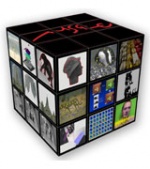 |
One important achievement of the Muscle group is the Muscle Network of Excellence, partially funded by the European Commission (FP6-507752, 1 March 2004 - 29 February 2008), managed by ERCIM and coordinated by Eric Pauwels (CWI, NL) and Nozha Boujemaa (INRIA, F) |
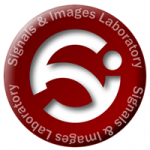 |
The Signal & Images Lab at ISTI-CNR (SI Lab) is working in the fields of signal processing, image understanding and artificial vision. Sensorial information is increasing its importance in both our everyday lives and the most advanced technological and scientific contexts. In particular, visual and audio information is becoming the most significant part of the global information to be processed, understood and manipulated. Our general goal is to increase the knowledge in signal processing, image understanding and artificial vision. This will be achieved by studying and developing models, methods and machines for the formation, processing, analysis and recognition of images and signals, and by applying them to several areas of scientific and technological interest. |
 |
The AYIN project-team (Ayin) is located at INRIA Sophia-Antipolis Méditerranée and aims to provide image processing tools to aid in the solution of problems arising in a wide range of concrete applications in Earth observation and cartography, for example cartographic updating, land management, and agriculture, while at the same time advancing the state of the art in the image processing methods used to construct those tools. An important recent theme, for example, is the incorporation of geometric information into stochastic and variational techniques, in the probabilistic case via the use of stochastic geometry, and in the variational case via the use of higher-order active contours. |
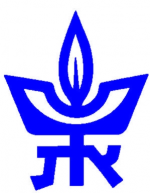 |
TAU-VISUAL at Tel Aviv University specializes in the extraction and processing of visual information from video and still images. The group has substantial expertise in the use of variational methods to solve fundamentally difficult problems, such as restoration, registration and segmentation of images and video. Typical application domains include medical image analysis, image retrieval, video analytics, environmental monitoring and 3D image acquisition. |
 |
The Computer Vision and Multimedia Laboratory (CVML ) of the University of Geneva is divided into three groups and carries out research in multimedia data processing, multimedia data management and security, as well as in multimodal human-machine interaction. Content-based Visual Indexing and Retrievalgroup: evelops strategies for the efficient indexing retrieval and exploration of large multimedia databases. Stochastic Information Processing group: studies various aspects of information theory and statistical (stochastic) information analysis and processing. Multimodal Interaction group: studiesvarious forms of interaction between humans, computers, and environment. Some considered interaction modalities are haptic, auditory, and based on physiological signals. Current developments concern: affective state determination and emotion recognition and their use for affective computing, multimodal interaction, brain-computer interfaces, mobility aids for sight handicapped people,object identification and authentication based on unclonable object features in large nonstructured databases, indexing and retrieval in very large multimedia databases, privacy preserving search, indexing and multiclass classification. |
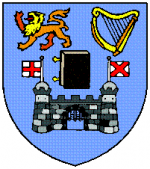 |
The School of Computer Science and Statistics in Trinity College Dublin has two collaborating groups, GV2 and Statica, that carries out activities on multimedia data (e.g. images, video and sound), sensor network data (e.g. road trafic, communications networks, camera network, motion capture) and environmental data (e.g. weather). STATICA focuses on Bayesian inference to solve statistical problems that arise in computer science, information systems and telecommunications focusing on developing statistical techniques to analyse large and complex data. GV2, the Graphics Vision and Visualisation group, has expertises in computer graphics, computer vision and all aspects of visual computing. GV2 was formed in 2006 with the integration of two longstanding TCD research groups: the Image Synthesis Group [ISG], established in 1993, and the Computer Vision and Robotics Group [CVRG], which was established 1983. |
 |
The research group "Visual Information Processing" consists of members of the University of Granada and the University of Jaén, from complementing fields as mathematics, statistics, computer science and physics, we carry out research on image restoration and enhancement, superresolution from compressed and uncompressed stills and video sequences, information retrieval from image and video databases, extraction of 3D information from video sequences for multimedia applications, tracking algorithms and optical flow, visual-statistical approach to multi-scale multiorientation representation models, computational photography, compressive sensing, active learning, fuzzy image processing, image classification and pattern recognition and multispectral image processing. |
 |
The Pattern Recognition department of the Institute of Information Theory and Automation of the Academy of Sciences of the Czech Republic is a basic research unit oriented to statistical model-based pattern recognition and computer vision areas. The department has achieved leading position in several areas of statistical pattern recognition, mainly in the physically correct modelling and recognition of visual surface properties and feature selection. The PR department consists of 12 staff members and 6 doctoral students. The department head is Prof. Ing. Haindl Michal, DrSc. |
 |
VTT, Technical Research Centre of Finland, is the biggest multi-technological applied research organisation in Northern Europe. With its staff of 3,100, its unique research facilities and extensive global co-operation networks, it provides leading-edge technology solutions and innovation services. VTT works to enhance its customers’ competitiveness and competence, creating the prerequisites for society’s sustainable development, employment and wellbeing. Augmented Reality (AR) is the technique of superimposing virtual objects in the user's view of the real world, providing a novel visualisation technology for a wide range of application. The Augmented Reality research group consists of two teams: 3D Tracking and Mixed Reality. Teams started working in the AR field in 2000 with the development of virtual advertisements for live TV broadcast. In the following years teams expanded their expertise to several application areas in ICT, media, industry and building & construction. The augmented reality research group has strong scientific competence and has participated in a number of EU projects relating the area, for example INMOVE, CADPIPE, MUSCLE NoE, INTUITION NoE, and the ongoing ITEA2 project ViCoMo. |
 |
SBA Research is a research center for Information Security funded by the national initiative for COMET Competence Centers for Excellent Technologies. We bring together 25 companies, 4 Austrian universities, one university of applied sciences, a non-university research institute, and many international research partners to jointly work on challenges ranging from organizational to technical security. |
 |
The Image and Video Processing group at UPC is a research group located in Barcelona. Its main research activities focus on Image Analysis and Video Representation. Regarding analysis, the GPI specializes in basic tools for analysis such as nonlinear filtering, mathematical morphology, segmentation (with Binary Partition Trees), face detection and recognition, multiview analysis for stereo and 3D reconstruction, object tracking, body tracking, gesture analysis, emotion recognition and the modelling of human activity. The Group also develops biomedical, remote-sensing, watermarking applications and multimodal interfaces (Smart Rooms). GPI video compression activities have been the basis of applications related to content-based video coding, video indexing and the creation of tables of content and contributions to international standardization processes such as MPEG-4 and MPEG-7. Most recently GPI is conducting research in multi-view/3D representation and coding. |
 |
INESC TEC is involved in scientific research and technological development, advanced training, consulting and technology transfer. The main areas of activity are Telecommunications and Multimedia, Power Systems, Manufacturing Systems, Information and Computer Graphics Systems, Optoelectronics and Electronic Systems, Robotics and Intelligent Systems, Innovation and Technology Transfer. INESC TEC is involved in the ERCIM MUSCLE Working Group with a team that is leading research in multimedia information retrieval within the Information and Computer Graphics Systems unit. |
 |
IEMN is a research institute created by the National Centre for Scientific Research (CNRS), two universities (University of Valenciennes and University of Lille 1) and an Engineer school (ISEN) of France northern region. The COMNUM group at IEMN is a research group located in Valenciennes. Its research activities are focused on three main topics: digital communications and radiofrequency systems for intelligent transportation systems, cognitive radio and cooperative networks, and digital image and video processing and communications. Regarding visual data processing and communication techniques, the group is leading research in joint source-channel video coding, optimization of multimedia delivery over wired and wireless networks, video transcoding, pre- and post-processing techniques, and digital image and video quality. |
